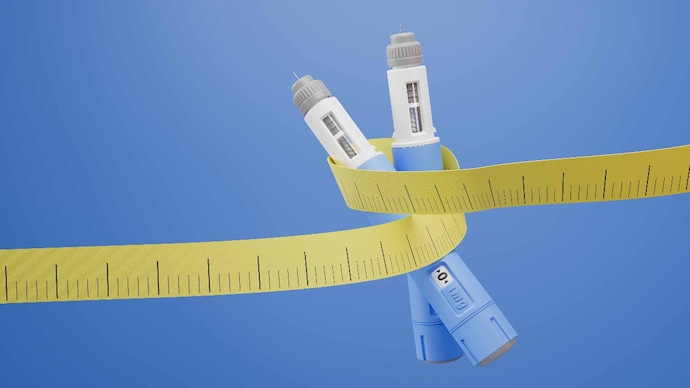Are Vetaloss drugs for me? To consider 5 things
Anti -motor drugs like GLP -1 are now very popular. But, do you really need it?


So far we all know how revolutionary GLP-1 drugs are, what they do and how they help, is no longer an unknown secret. But is probably the most important and where all the debate is on what it is for?
Can it work for you? How will it affect your body cells? And seriously. Are you really fat that you need weight loss drugs?
I have often asked myself these questions, so after talking with some of India’s best doctors, this is what I welcome:
Are you clinically obese? And how to calculate it?
BMI can not define if you are fat
Jump to calculate the body mass index, its definition is being challenged and is being questioned as the only parameter of obesity. Any (especially Indians) with high BMI can have too much bone and mass in muscles. A person with moderate high or general-ranges BMI may have body fat percentage. Meaning BMI does not define the decisive body. So what does it do?
Waistband ratio: a better solution for Indians
A good way to determine obesity is, especially in the Indian context: to calculate the ratio of the waist-to-cool, first measure the waist circumference, the position is just above the abdomen button, then measure the circumference of the hip, measuring the periphery of the hip, in the widest part around the hip. Now divide the waist from the hip to get the hip ratio from the waist to the waist.
Marker:
South Asian Men> 0.9
South Asian Women> 0.8
Body Fat percent: Clinical Standard
This is the most clinical way to determine obesity. Endocrine Society of India suggested 25% for men and 30% for women, catch is difficult to find out without professional help.
There are many ways to calculate the body fat percent:
Dexa scan: The most accurate clinical method.
Uses low-level X-rays to separate bone, muscles and fat.
It is usually done in medical or research settings.
Skinfold Test:
This involves pinching the skin at various places to measure the thickness of fat using calipers.
This requires skinfold calirs and experiences for stability and accuracy.
“Thin fat” event
A person with BMI of 26 may not show more weight, but body fat can be up to 38%, which is focused around the abdomen. BMI works on the notion that all fat are similar. Nevertheless, fat around the arms and thighs is not as harmful. Many Indians are ‘thin fat’, which have thin hands and feet but have a big stomach.
Intestinal fat: hidden risk
Broadly, a 90% of fat in a person is one that can be seen externally. This fat is under the skin under the skin. The remaining 10% is inside the abdomen, which is called intestinal fat, as it surrounds the liver and kidneys such as internal (intestine) organs. This is the fat that you cannot pinch. It is the intestine fat that doctors need to target the clinic. The intestine (central) fat produces toxins, poor hormones that increase insulin resistance and press insulin secretions.
Example: You may not have a high BMI and does not see overweight, but the surroundings around the organs are high levels of fat, which are extremely unfit and if such a person becomes diabetes, then GLP -1 can benefit greatly from drugs.
Even if I can tolerate it, what do I want?
Reimberindia only entered the big League weight-loss drug market:
- Mounjaro launched in March (3,500 -RS 4,375 per vial)
- Vegovi followed the east-filled pen in June, monthly Rs 17,345-RS 26,015
- The demand is real – drug sales have increased, and generics are already on the horizon
- But GLP1 drugs are not cosmetic solutions; They are evidence-based medical devices designed to deal with chronic metabolic conditions such as obesity and diabetes, especially when diet and exercise are reduced by themselves.
These are general guidelines, but before starting any GLP1 medicine:
- Consult an endocrinologist or obesity specialist
- Determine your type and body fat, not only weight or BMI
- Discuss your lifestyle, dietary habits and metabolic history





